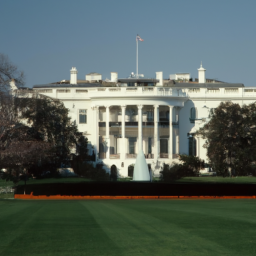The first 10 presidents of the United States were a diverse group of men who helped shape the nation during its formative years. With the exception of a couple of interim presidents who held office briefly, the rest of the country's modern leaders have suffered tragic assassinations, scandals, or controversies. In contrast, the first 10 presidents helped establish the foundations of the U.S. government and guided the country through its early challenges.
George Washington was the first president of the United States, serving two terms from 1789 to 1797. He set many precedents during his tenure, including the two-term limit, the title of "Mr. President," and the tradition of delivering an inaugural address. Washington is also known for his leadership during the Revolutionary War, where he helped secure America's independence from Great Britain.
John Adams was the second president of the United States, serving one term from 1797 to 1801. He was a strong advocate for American independence and played a key role in drafting the Declaration of Independence. During his presidency, he faced challenges such as the Quasi-War with France and the Alien and Sedition Acts, which limited free speech and press.
Thomas Jefferson was the third president of the United States, serving two terms from 1801 to 1809. He is best known for his drafting of the Declaration of Independence and his advocacy for individual rights and freedoms. During his presidency, he oversaw the Louisiana Purchase and the Lewis and Clark Expedition, which helped expand the country's territory and explored its western frontier.
James Madison was the fourth president of the United States, serving two terms from 1809 to 1817. He played a key role in drafting the U.S. Constitution and the Bill of Rights, which guaranteed individual liberties and established the framework for the federal government. During his presidency, he oversaw the War of 1812, which saw the U.S. fight against Great Britain again.
James Monroe was the fifth president of the United States, serving two terms from 1817 to 1825. He is best known for his Monroe Doctrine, which stated that European powers could not interfere with the affairs of the Western Hemisphere. During his presidency, he oversaw several territorial acquisitions, including Florida and parts of the Oregon Territory.
John Quincy Adams was the sixth president of the United States, serving one term from 1825 to 1829. He was a strong advocate for individual rights and freedoms and played a key role in drafting the Monroe Doctrine. During his presidency, he oversaw the construction of the Erie Canal, which helped connect the Great Lakes to the Atlantic Ocean.
Andrew Jackson was the seventh president of the United States, serving two terms from 1829 to 1837. He was a controversial figure who was known for his aggressive policies towards Native Americans and his veto of the Second Bank of the United States. During his presidency, he also oversaw the Trail of Tears, which forced thousands of Native Americans to relocate from their ancestral lands.
Martin Van Buren was the eighth president of the United States, serving one term from 1837 to 1841. He faced several challenges during his presidency, including the Panic of 1837, which caused an economic depression. He also dealt with the ongoing issue of slavery and the growing tensions between the North and the South.
William Henry Harrison was the ninth president of the United States, serving only one month in 1841 before his untimely death from pneumonia. He was the first president to die in office and his death sparked a constitutional crisis over the line of succession.
John Tyler was the tenth president of the United States, serving from 1841 to 1845. He became president after Harrison's death and faced many challenges during his tenure, including the annexation of Texas and growing tensions between the North and the South over the issue of slavery.
In conclusion, the first 10 presidents of the United States helped establish the foundations of the U.S. government and guided the country through its early challenges. They set many precedents that are still followed today and helped shape the presidency into what it is today. While they faced many challenges and controversies, their legacies continue to inspire and guide future generations of Americans.
